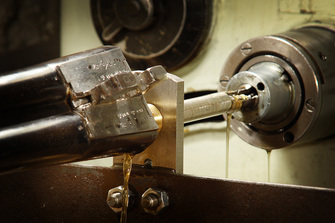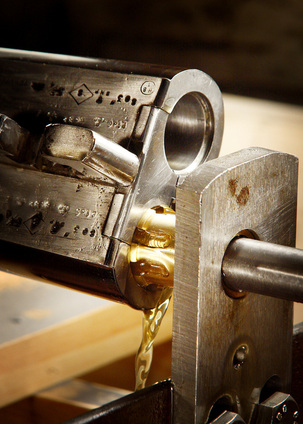Eight bore barrel honing.
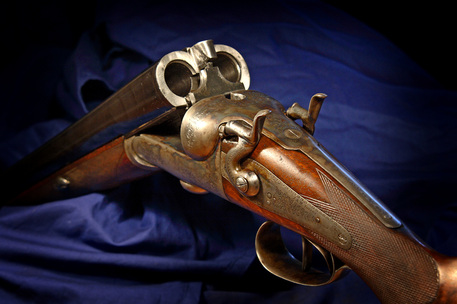
This really nice J W Tolley eight bore double barrel hammer wildfowling gun was brought in for some serious honing work.
The wads that the owner wanted to use required the bores to have a minimum diameter of .835".
The existing diameter was substantially smaller than this. If the owner fired cartridges loaded with his prefered wad through the barrels without having the main bore opened up first there would be a serious risk of the barrels bulging or even bursting.
The wads that the owner wanted to use required the bores to have a minimum diameter of .835".
The existing diameter was substantially smaller than this. If the owner fired cartridges loaded with his prefered wad through the barrels without having the main bore opened up first there would be a serious risk of the barrels bulging or even bursting.
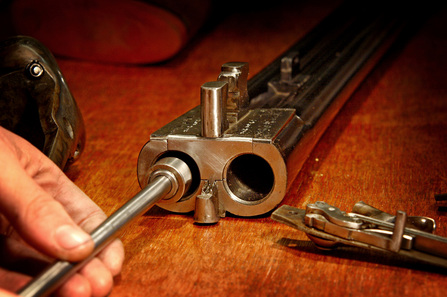
First we needed to assess the viability of the work being requested. Accurate measurement of the barrel bore diameter and wall thichness is required to enable a decision to be made. Here a plug guage is being offered into the bore to measure the diameter. We also use an adjustable guage designed to detect any ovality of the bore, and a wall thickness gauge. The barrels are also visually inspected for any faults prior to work comencing.
To increase the bore size as required we would need to increase the bore diameter by .030". This would result in the barrel wall thickness being reduced by .015". On a lighter gun like a standard twelve bore this would result in there not being sufficient wall thickness left to withstand the pressure of firing, but on this heavy eight bore the remaining wall thickness would still be more than adequate.
To increase the bore size as required we would need to increase the bore diameter by .030". This would result in the barrel wall thickness being reduced by .015". On a lighter gun like a standard twelve bore this would result in there not being sufficient wall thickness left to withstand the pressure of firing, but on this heavy eight bore the remaining wall thickness would still be more than adequate.
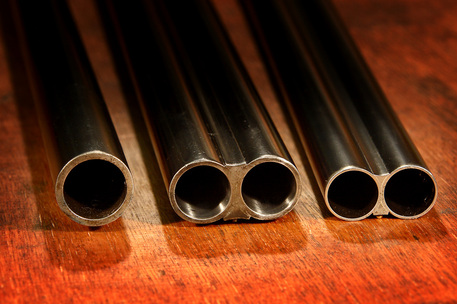
For comparsion I have laid out a single four bore, the double eight bore in question and a standard double twelve bore. I think the difference in bore size and wall thickness is quite obvious.
Left to right, single four bore, double eight bore, double twelve bore.
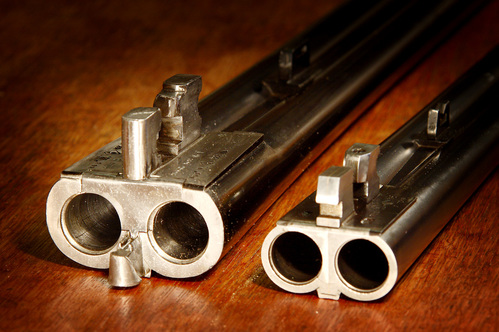
Here we have a view of the breach of the double eight bore next to a double twelve bore. The eight bore can be seen to be substantially bigger than the twelve.
Having decided that the work was viable, how to increase the bore most efficiently was now the question. We could spill bore the barrels, a very old and effective technique using a hardened steel scraper adjusted with packing pieces attached to a long rod. We could use a guided reamer in the same manner as back boring a 12 bore. Both these techniques have some merit, but the barrel would still need polishing internally by lead lap, or honing. I decided that there would be less risk to the barrel and we could produce a better finish by doing the entire job on our barrel honing machine.
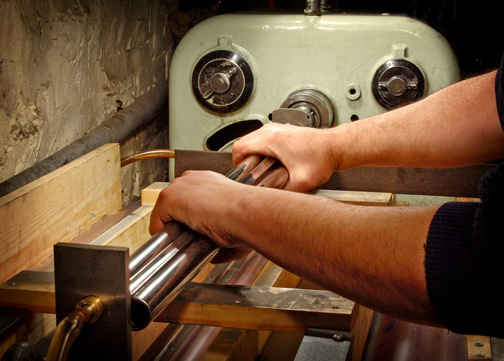
Here we see the eight bore barrels mounted on a carriage on our honing machine. The carriage takes the weight of the barrels, which in this case was substantial, while the operator (me) holds the barrels to resist the turning force of the honing machine. Holding the barrels by hand allows a sense of how much pressure is being applied by the honing stone. The barrels can be quickly released to rotate freely reducing any risk to the barrels if a problem should occur during the honing.
Once the work was completed the barrels and action were submitted to the Birmingham Gun Barrel Proof House for testing, which they passed without problem. The owner can now use his prefered cartridge/wad combination sure in the knowledge that his gun is capable of firing them safely.
This classic wildfowling gun is now fit for many more trips onto the foreshore.
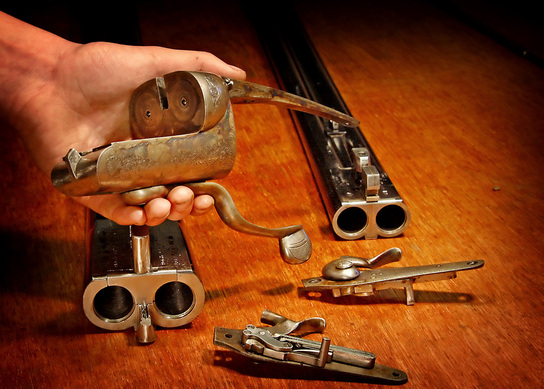
The eight bore action by J W Tolley, with Jones rotary closure, and back action locks.
